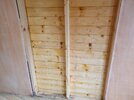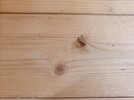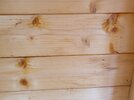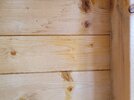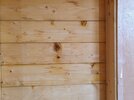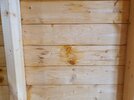I have spent the best part of 10k on a summerhouse for the garden end of last year which I didn't use during the winter as I still had to furnish inside. I noticed a few months ago the bottom strip on the inside had turned black most of the way round which then revealed small pools of water every time it rained, the roof is fine as the water is coming through when I aim a hose at the side. Much of the tongue and groove isn't tight so assumed that was the issue so went round every gap with CT1 silicone, also filled every gap at the nails with Woodfiller.... still coming in.
I have now removed 1 sheet of ply and the insulation from the inside to see where it was coming in and it is actually seeping through the knots, not just 1 but about 10 knots just in that small section alone.
I bought everything myself and paid a joiner to build it so don't have any comeback on the builder, so just a few questions.
1) has anybody came across this before?
2) do I have any comeback on the company who sold the log lap for selling inferior wood possibly not quality checked?
3) how do i fix it without rebuilding it with new log lap, ie anything that would seal it?
I have now removed 1 sheet of ply and the insulation from the inside to see where it was coming in and it is actually seeping through the knots, not just 1 but about 10 knots just in that small section alone.
I bought everything myself and paid a joiner to build it so don't have any comeback on the builder, so just a few questions.
1) has anybody came across this before?
2) do I have any comeback on the company who sold the log lap for selling inferior wood possibly not quality checked?
3) how do i fix it without rebuilding it with new log lap, ie anything that would seal it?


